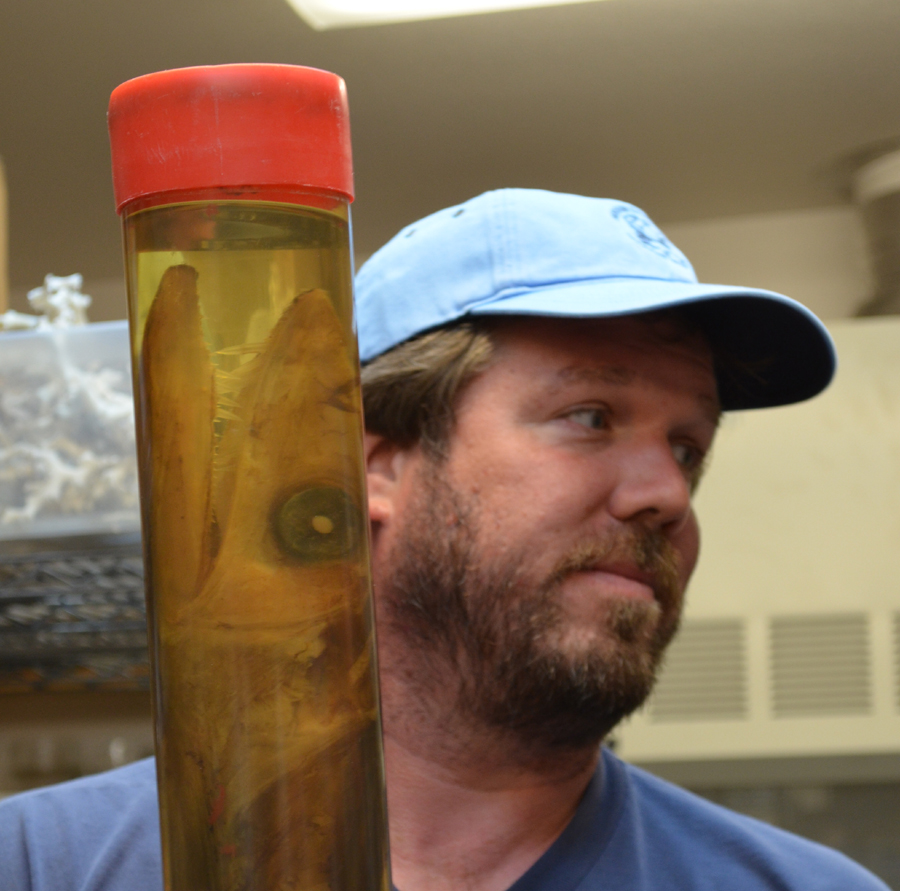Deep-Sea Devils
Friday, May 18 – Once we were done with our big farewell cleanup of our lab and dorms, we set out to learn a few more things about the lab. One of the courses being taught at OIMB while the Florida Tech Biological Oceanography class was there was a course in Deep-Sea Biology. Craig Young, Ph.D. is the resident deep-sea biologist, also a larval ecologist and the director of the laboratory which hosted us.

Dr. Young allowed us to look through his mini-museum with hundreds of deep-sea specimens from around the globe captured and preserved during his lifetime career of conducting deep-sea research.

There were giant isopods, giant tube worms, giant clams…

… giant fish with giant teeth… (am I sensing a giant theme here?).
The Biological Oceanography students from Florida Tech also stopped by to have a look at the lab’s remotely operated vehicle for deep-sea work. This was of special interest to two of our Florida Tech students, both of whom are actually majors in the world class Ocean Engineering program at Florida Tech.

Finally, the Biological Oceanography students at Florida Tech got to visit the deep-sea holding tank room, where there are deep sea corals which have been kept alive here for nine years (no small feat!).

They also have a system here for bubbling methane to keep deep-sea animals from methane seeps alive. If you are familiar with the explosive properties of methane, you will know that a good ventilation system was essential to maintain a safe facility.








Our Earth’s surface is covered by water up to 71%. Even thought the ocean’s surface is exploited for fishing, transportation and scientific researches, the deepest part of the world’s oceans continues to be untouched by any humans. The deepest seas has many untold mysteries, legends and stories which keep Mankind asking for more and searching for answers for thousands of questions.